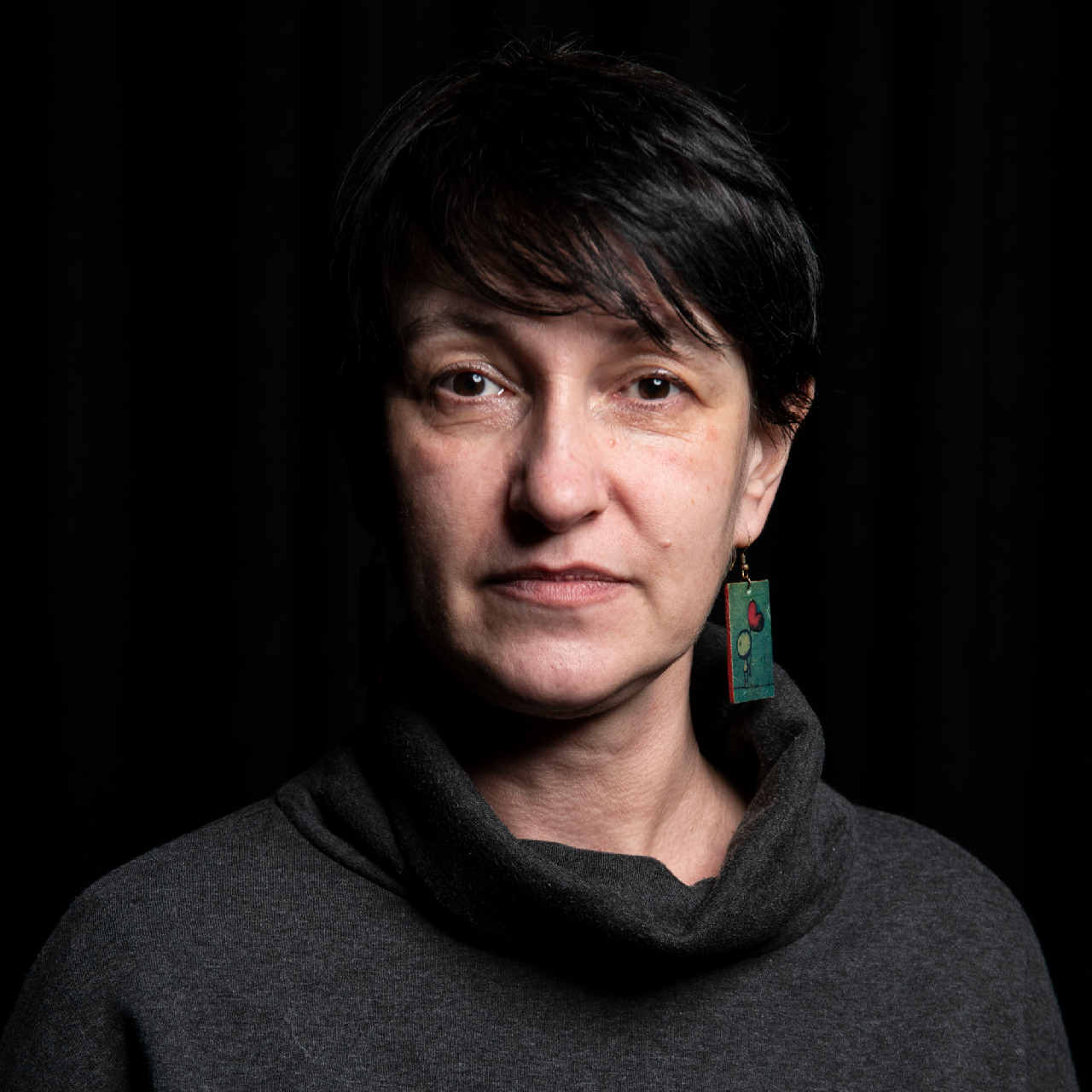On November 8, 2021, after having been sick for some time, Hajra Ćatić, an activist from Srebrenica, left this world. A few days later, her body was laid to rest in her village, close to the Potočari memorial site outside Srebrenica. Hajra hoped not to leave this world before she had the chance to bury the remains of her son Nino who disappeared in July 1995. But he is still missing, and she is now gone.
For almost three decades Hajra dreamed about the day someone from the Missing Persons Institute in Bosnia and Herzegovina would call her to say they had identified pieces of bone belonging to Nino Ćatić. For the victims of the genocide in Srebrenica — perpetrated by military forces under the command of war criminals Ratko Mladić and Radovan Karadžić — a full body is rarely discovered. Most were executed and then tossed in mass graves scattered around the area before being dug up, moved and reburied multiple times in an attempt to conceal the evidence of the crime. Those whose bodily remains have been found and identified are buried at the memorial site in Potočari where today 6,652 people rest.
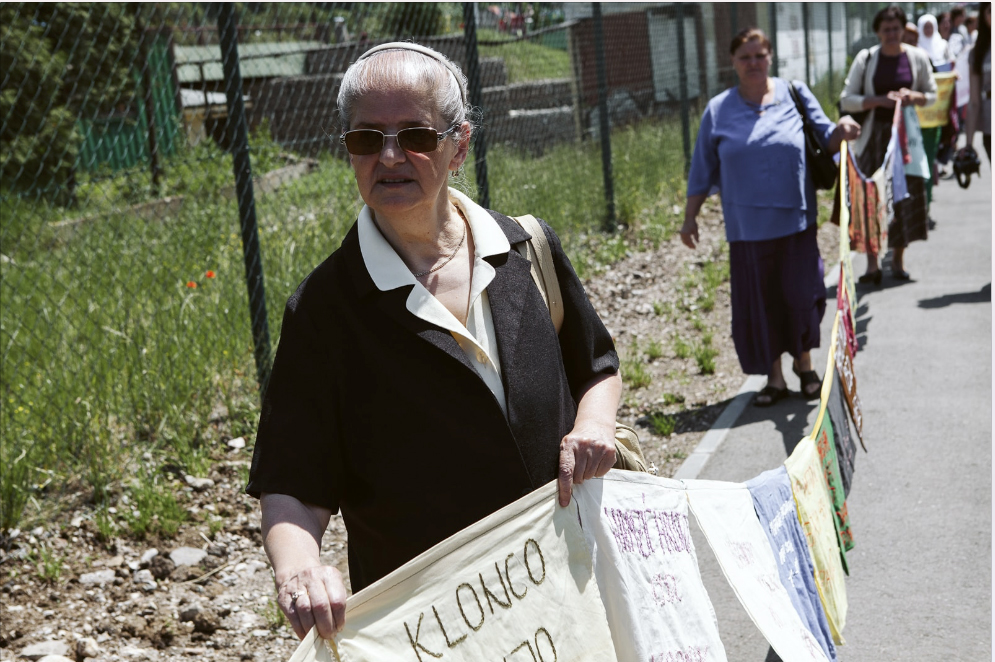
Hajra Ćatić fought all her life for justice while dreaming to her last day that she might find the remains of her son who was killed in Srebrenica in July 1995. Photo: Jasmin Agović.
During our many encounters over the years, Hajra used to say that since the end of the war she woke up almost every night wondering where Nino’s body could be. During the day, she waited for a call. Sometimes, she used to wander the forest looking for traces of the people who were killed there, hoping to find Nino.
On November 11, two days after Hajra died, about a dozen women activists from Srebrenica gathered in Tuzla’s main square. They’ve done this for over two decades on the 11th of each month as a reminder of July 11, 1995, the day when Srebrenica was occupied and the killing started. They come together holding pictures of their missing family members, form a circle and stand in the square for about 30 minutes. Hajra used to be there almost every month. This November her friends, activists like her, came to say their last goodbye while promising they will continue the struggle.
Life lessons
Both the local and international media tend to portray the women activists from Srebrenica as passive mourners whose singular role is “mother.” This shallow framing misrepresents these women, who are in fact fierce people with feminist and universal messages and aims.
The movement’s moment of birth is evidence of the strength and dignity of these women.
After Mladić’s forces took Srebrenica under the passive watch of the U.N., they separated men and women. The women were expelled, taken by bus to Kladanj and then Tuzla, which was outside the territory controlled by the wartime Republika Srpska forces. The men and boys were taken to various killing sites and summarily executed over the following days.
The movement's moment of birth is evidence of the strength and dignity of these women.
For months, survivors in Tuzla were desperately waiting to hear any information about what had happened in Srebrenica. After some time, they decided that just sitting and mourning would not change anything, so they got together and organized. In January 1996, a movement was born, almost entirely made of women. They went out in the streets to protest for the first time, demanding the International Red Cross tell them the truth about what happened to the men in Srebrenica.
Among those who led the protests was Hajra, as well as Hatidža Mehmedović (who died in 2018), Munira Subašić, Kada Hotić and many others. They later formed several associations that acted together for the same goals. They became a powerful force.
Lara J. Nettelfield, a professor at Columbia University and author of two books on Srebrenica, claims that the movement born in Tuzla “created and changed history.” According to her, the issues the movement deals with are, at their core, about citizens’ rights.
“Avishai Margalit, an Israeli philosopher, writes about a ‘decent society,’ the one in which the existing institutions do not humiliate their citizens, who also do not humiliate each other,” Nettelfield told me when I interviewed her in 2020, on the 25th anniversary of the genocide. “The Mothers of Srebrenica are fighting exactly for that. A decent society.”
According to Nettelfield the importance of this struggle goes beyond Bosnia and the region. “They literally changed history by teaching us about responsibility after political violence,” she said.
Creating the narrative
Munira Subašić once told me that their main goal is to establish the truth about the fate of their family members. She found the bodily remains of her son and buried him in Potočari in 2013.
“They found two pieces of bone from my Nermin. Only two. And even these two were in two different locations,” she told me when we met after she buried her son. “And it hurts a lot. Forever. But, unlike many others, now I have a place where I can go and be close to him. Many do not have even that.”
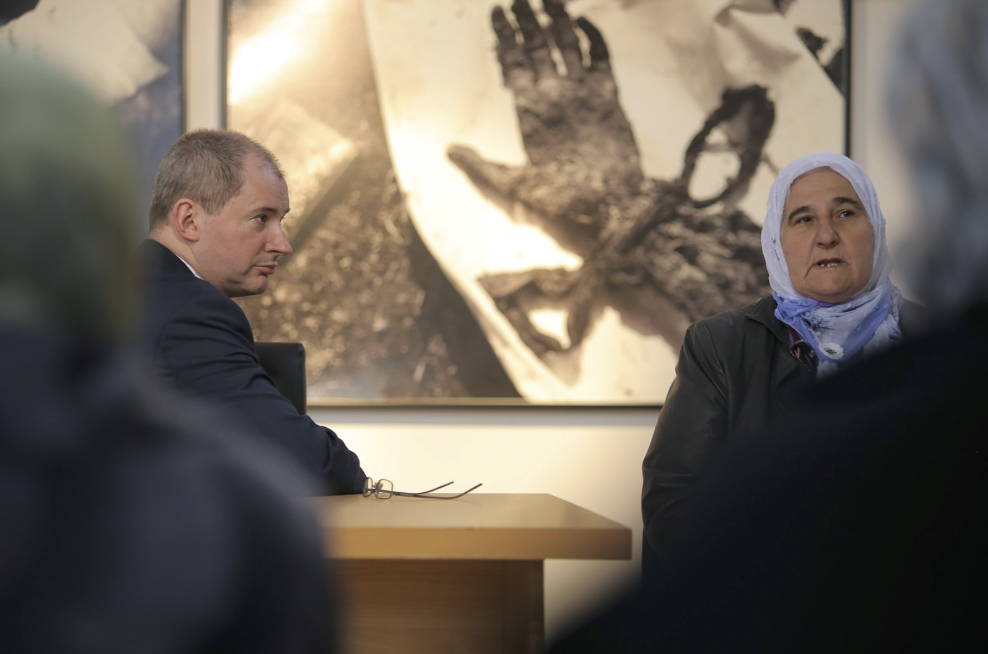
Munira Subašić has been working for over two decades to establish the truth about what happened to the men and boys of Srebrenica in July 1995. Photo: Jasmin Agović.
Munira, Kada, Hatidža, Hajra and other women from the movement — and there are many — collected pieces of evidence over the years as well as testimonies about the crimes committed in Srebrenica. Not only did they submit this material to prosecutors, but they also brought the stories to the public. At the same time, they testified at war crime trials and encouraged others to do the same. They insisted that those who are responsible, each and every individual who played a role in perpetrating the genocide, must be brought to justice, including the U.N. and international officials who did nothing to prevent the massacres.
Over the years they gathered thousands of testimonials that have helped the ICTY reconstruct events and identify murderers.
As part of their mission to force the international community to take responsibility for their role in the genocide, they organized a massive protest in October 1997 outside the local headquarters of a number of international organizations in Sarajevo. Women massed outside the buildings holding banners that read: “We want the truth.”
Since 1998, the movement has both cooperated with and pressured the International Criminal Tribunal for the former Yugoslavia (ICTY). When there was talk of ending the court’s mandate before war criminals like Mladić and Karadžić were brought in front of the judges, the movement fought for the court to complete its mission. At the same time, they have been constant critics of the court, observing every step the prosecution and judges take and protesting when needed. The pressure never stopped.
During their first meeting with the prosecution in The Hague, the representatives of the movement were told to write down everything they could remember about July 1995. Over the years they gathered thousands of testimonials that have helped the ICTY and other prosecutors all over the region reconstruct events and identify murderers.
At the same time, they worked with the newly established International Commission for Missing Persons (ICMP), in Bosnia, to get people to submit DNA samples to help with the identification of remains. They also collected information about the location of mass graves and other burial sites.
Building real peace
In 1998, the movement started to call for a memorial and burial site to be created at Potočari. It turned into a real battle.
Politicians were planning to build the site in Kladanj or Sarajevo, but they hadn’t consulted with the survivors of Srebrenica. In revolt, the movement ran a survey asking people where they wanted to bury their loved ones. The majority of the 12,500 people who were surveyed chose Potočari, the place where many families had been together for the last time.
The problem was that with the Dayton Peace Agreement (DPA) that ended the war in Bosnia in 1995, Srebrenica and nearby Potočari became a part of the Republika Srpska (RS) and there was little chance that the RS government would allow a memorial to the victims of its wartime genocide to be built on its territory.
In the late ’90s, the war was so recent that people were hesitant to do anything that could disturb this artificially created peace, and the poll results were largely ignored. But women in the movement insisted that real peace will never come if people aren’t forced to confront the past. They wanted the memorial to be at the site of the crime. They took their fight to the public, spoke with the media and often simply showed up to be physically present in public places around where politicians and international officials were meeting.
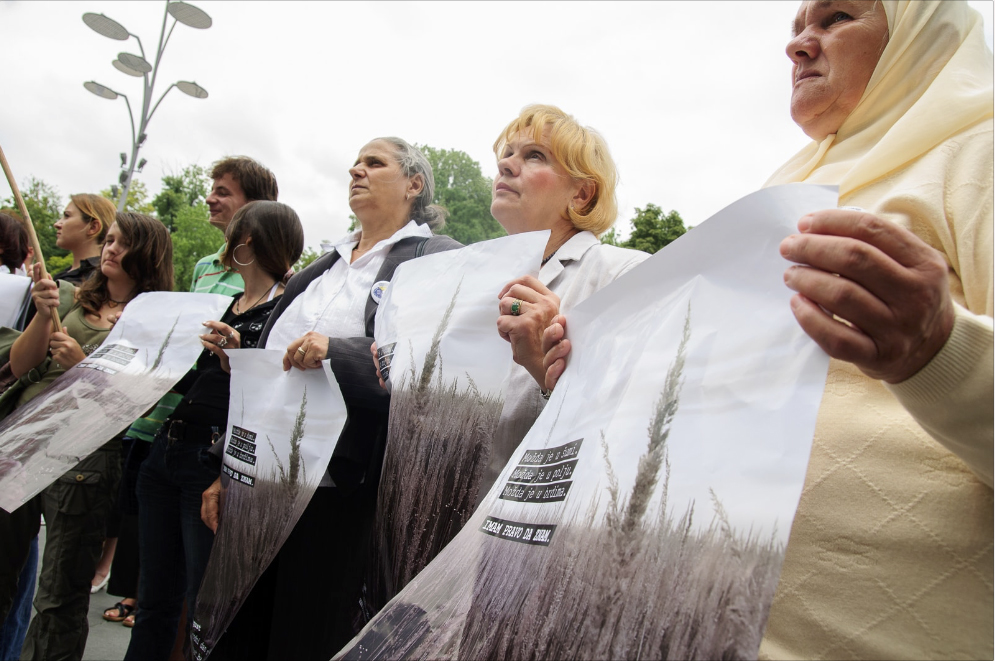
The movement was always present in the public, protesting and calling for accountability. Photo: Jasmin Agović.
The pressure worked. In 2000, Wolfgang Petritsch, who was the High Representative in Bosnia, an international administrator appointed by the UN Security Council to oversee the implementation of the DPA, gave Potočari a special status that removed the ability of the RS to prevent its construction.
In 2000, construction began on the memorial and burial site for all those killed in July 1995. The laying of the foundation stone at Potočari also marked the start of the return of people who were expelled from the area during the war.
Among those who came back were some of the leaders of the movement, including Hatidža Mehmedović who came back in 2003. From her home in Srebrenica, she would say, “I returned to live from the memories of my house. I have three trees that my youngest son planted. He was young then; the trees are big now. I live where my children once walked, I always imagine them coming, whenever I am alone I always imagine.” Some women returned alone to live in villages around Potočari that were almost completely destroyed. But their presence was a clear sign that the return was possible.
In one day, 600 tabuts, most of them with only a few pieces of bones inside, were laid to the ground.
In March 2003, the first mass funeral was held at Potočari. In one day, 600 tabuts (coffins), most of them with only a few pieces of bones inside, were laid to the ground. The movement organized everything, arranging that their members would travel to Potočari by bus using the same route that they were expelled through.
I had the honor of being invited to join some of the leaders of the movement on one of these buses. It was the first time back in Srebrenica since 1995 for some of the people on the bus. It was a hot summer day and the authorities had provided old buses with no air conditioners.
During the three hour drive, our long convoy was often passed by cars carrying religious and political leaders. Each time one of these cars passed our bus, the women’s emotions rose. “Where are they going? They cannot do anything without us,” the women around me said.
The bus was full and we could barely breathe. Three people were sitting in each seat for two and others were standing or sitting on the floor. The movement managed to mobilize the entire country, asking people to join on that day to make the burial more dignified. At the same time, they were asking for help with putting 600 tabuts into the ground.
As we were travelling, the atmosphere changed as we approached Srebrenica. Memories occupied the entire space.
“Here is where I saw some dead bodies.”
“Here is where one woman was taken from the bus to the forest.”
“Here I saw my man for the last time. He was in the line with another man.”
It was like the road through hell, guided by survivors.
“Until today, I say it was the biggest mass return of people from Srebrenica, these 600 came back together. Unfortunately, not alive,” Kada Hotić told me years later.
When we arrived at Potočari, a sea of people covered the entire area. The prayer started soon, followed by deafening silence. Everybody joined in carrying tabuts and placing them into the graves in silence. And then, covering the valley was the most horrifying thing I ever heard in my life: the sound of earth hitting the 600 mostly empty tabuts. It lasted a long time.
Acknowledgement of genocide
In July of the same year, the remains of another 282 people were buried, and for the very first time, a politician from Republika Srpska was present, Dragan Mikerević, the then-prime minister.
Later, in September, more bodies were buried. This time the movement managed to bring former U.S. President Bill Clinton to Potočari. Munira Subašić told me he was invited because the movement finds him responsible too. “He could have stopped what happened in 1995. But he did not,” Subašić said. “While having him there, we wanted to have political and emotional reactions to Srebrenica.”
The movement’s representatives did not want to meet Clinton anywhere but in Potočari, where they posed five questions to him, including the question of whether he is ready to apologize to the victims of Srebrenica. They received no answer.
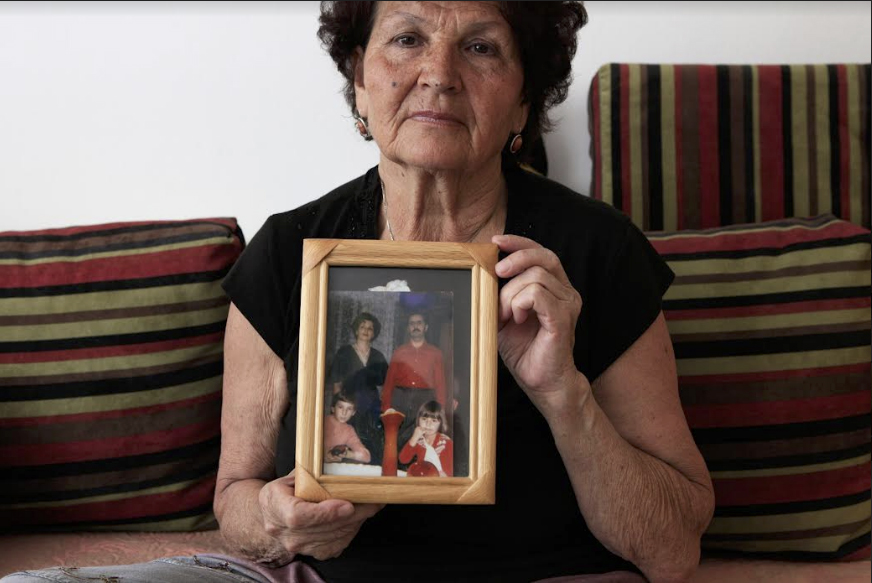
Kada Hotić lost her entire family in July 1995. She survived to fight for them, and all the others who disappeared or were killed during the war in Bosnia. Photo: Jasmin Agović.
Shortly after the meeting, I met with Kada Hotić in Potočari. She told me that Clinton cried at one point. “I told him, do not cry. We do not need your tears, but rather your help to find those who were killed, and those who killed them,” she said, adding that she does not need anybody’s tears.
“I have enough of my own. I do not want anybody to be sad for me. But I want everybody to be aware of the crimes that were committed,” she said, “and of what needs to be done in order for justice to be fulfilled.”
Kada lost her son, husband, two brothers, brother-in-law and 56 other members of her family. Her son’s bodily remains were buried in 2020 in Potočari.
"I do not want anybody to be sad for me. But I want everybody to be aware of the crimes that were committed."
Kada Hotić
After Clinton, more politicians were summoned by the movement to Srebrenica. Almost all of them came. The public in Bosnia, including some Srebrenica survivors, sometimes oppose having politicians talk in Potočari during the annual July burials. The movement maintains that they want them in Potočari as a sign of the acknowledgement of genocide.
In 2015, the movement invited Aleksandar Vučić, who at the time was the prime minister of Serbia and is now the president. When he came, women from the movement greeted him at the entrance to Potočari and gave him a small flower, the symbol of Srebrenica. Munira later told me that Vučić was an important visitor. “Not for me, not even because of my son, but for kids in Serbia who are poisoned by chauvinism,” she said.
For Vučić to come and to lay flowers at Potočari was for the women of the movement a sign that he accepted as a historical fact what is written on the monument — that over 8,000 boys and men were murdered there in 1995 in an act of genocide. “For us, this is the end of the story with Vučić,” Kada Hotić told me later.
The same year, Milorad Dodik, a Bosnian Serb politician who often denies the genocide publicly, did the same as Vučić, laying a wreath at the monument and acknowledging the victims.
The movement went a step further when in 2000, for the first time after the war, their representatives spoke publicly in Serbia about the genocide. The first public lecture was in Niš and the room where the event was held was mostly full of angry men when six women from Srebrenica arrived. The men were shouting but when the police tried to intervene, Kada Hotić stopped them. She told the police she had a feeling that they came to listen.
The same thing happened around the same time at an event in Belgrade when 15 women from Srebrenica were protected from angry crowds by a significant police presence. Years later, Munira remembers that in Belgrade, after the lecture, a group of young men approached and asked if they could come to Srebrenica. Munira and the others agreed.
“I still remember a boy who came to me after walking through Potočari telling me he counted 74 graves where people of his age were buried. He told me that his father and grandfather lied to him about Srebrenica. And he cried there. For me, to be able to tell him the truth, and for them to be willing to listen, it was a big thing,” Munira said.
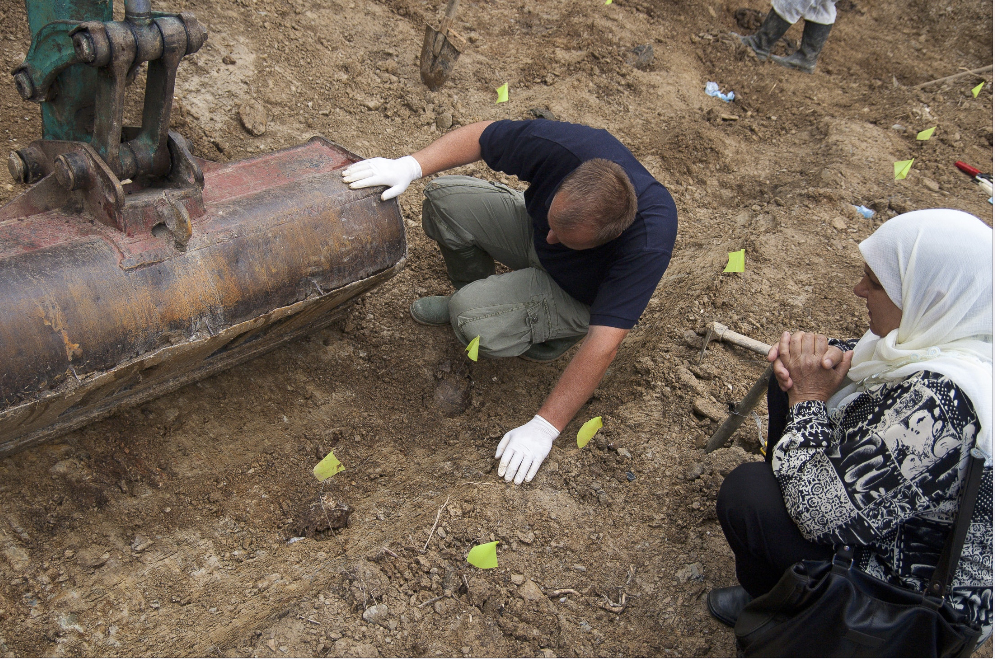
The late Hatidža Mehmedović at one of the mass graves in the Srebrenica area. She buried her two sons and husband in 2010. She died eight years later. Photo: Jasmin Agović.
The movement has done much more over the years, speaking the truth not only to people in the region but globally.
In 2010, they succeeded at getting the European Parliament to issue a decision naming July 11th the day of remembrance for the victims of Srebrenica. In 2012, they initiated a court case against the U.N. and the Netherlands, whose battalion of peacekeepers were in Srebrenica in 1995. They tried to start similar legal proceedings against a number of foreign officials, but these attempts failed due to diplomatic immunity.
Many of the women from the movement today are elderly, but they are still continuing their struggle. They demand nothing more than a decent society for us all to live in where everyone can live and die in dignity.
Feature photo: Jasmin Agović.






